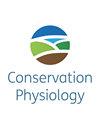Divergent impacts of the neonicotinoid insecticide, clothianidin, on flight performance metrics in two species of migratory butterflies
IF 2.6
3区 环境科学与生态学
Q2 BIODIVERSITY CONSERVATION
引用次数: 0
Abstract
Long-distance flight is crucial for the survival of migratory insects, and disruptions to their flight capacity can have significant consequences for conservation. In this study, we examined how a widely used insecticide, clothianidin (class: neonicotinoid), impacted the flight performance of two species of migratory butterflies, monarchs (Danaus plexippus) and painted ladies (Vanessa cardui). To do this, we quantified the free-flight energetics and tethered-flight velocity and distance of the two species using flow-through respirometry and flight mill assays. Our findings show differential effects of the pesticide on the two species. For painted ladies, we found that clothianidin exposure reduced average free-flight metabolic rates, but did not affect either average velocity or total distance during tethered flight. Other studies have linked low flight metabolic rates with reduced dispersal capacity, indicating that clothianidin exposure may hinder painted lady flight performance in the wild. Conversely, for monarchs, we saw no significant effect of clothianidin exposure on average free-flight metabolic rates but did observe increases in the average velocity, and for large individuals, total distance achieved by clothianidin-exposed monarchs in tethered flight. This suggests a potential stimulatory response of monarchs to low-dose exposures to clothianidin. These findings indicate that clothianidin exposure has the potential to influence the flight performance of butterflies, but that not all species are impacted in the same way. This highlights the need to be thoughtful when selecting performance assays, as different assays can evaluate fundamentally distinct aspects of physiology, and as such may yield divergent results.新烟碱类杀虫剂氯虫苯甲酰胺对两种迁徙蝴蝶飞行性能指标的不同影响
长途飞行对迁徙昆虫的生存至关重要,破坏它们的飞行能力会对保护工作产生重大影响。在这项研究中,我们考察了一种广泛使用的杀虫剂氯噻啶(新烟碱类)如何影响两种迁徙蝴蝶--帝王斑蝶(Danaus plexippus)和画眉蝶(Vanessa cardui)的飞行性能。为此,我们使用流过式呼吸测定法和飞行磨测定法对这两种蝴蝶的自由飞行能量、系留飞行速度和距离进行了量化。我们的研究结果表明,杀虫剂对这两个物种的影响是不同的。对于画眉鸟,我们发现接触氯虫苯甲酰胺会降低自由飞行的平均代谢率,但不会影响系留飞行的平均速度或总飞行距离。其他研究将低飞行代谢率与分散能力降低联系在一起,这表明暴露于氯噻菌胺可能会阻碍彩绘雌鸟在野外的飞行表现。相反,对于帝王斑蝶,我们发现暴露于氯噻菌胺对平均自由飞行代谢率没有显著影响,但却观察到暴露于氯噻菌胺的帝王斑蝶在系留飞行中的平均速度和总飞行距离都有所增加。这表明君子兰对低剂量的氯噻菌胺有潜在的刺激反应。这些研究结果表明,接触噻虫啉有可能影响蝴蝶的飞行性能,但并非所有物种都会受到相同的影响。这凸显了在选择性能检测方法时需要深思熟虑,因为不同的检测方法可以评估生理机能的不同方面,因此可能会产生不同的结果。
本文章由计算机程序翻译,如有差异,请以英文原文为准。
求助全文
约1分钟内获得全文
求助全文
来源期刊

Conservation Physiology
Environmental Science-Management, Monitoring, Policy and Law
CiteScore
5.10
自引率
3.70%
发文量
71
审稿时长
11 weeks
期刊介绍:
Conservation Physiology is an online only, fully open access journal published on behalf of the Society for Experimental Biology.
Biodiversity across the globe faces a growing number of threats associated with human activities. Conservation Physiology will publish research on all taxa (microbes, plants and animals) focused on understanding and predicting how organisms, populations, ecosystems and natural resources respond to environmental change and stressors. Physiology is considered in the broadest possible terms to include functional and mechanistic responses at all scales. We also welcome research towards developing and refining strategies to rebuild populations, restore ecosystems, inform conservation policy, and manage living resources. We define conservation physiology broadly and encourage potential authors to contact the editorial team if they have any questions regarding the remit of the journal.
 求助内容:
求助内容: 应助结果提醒方式:
应助结果提醒方式:


